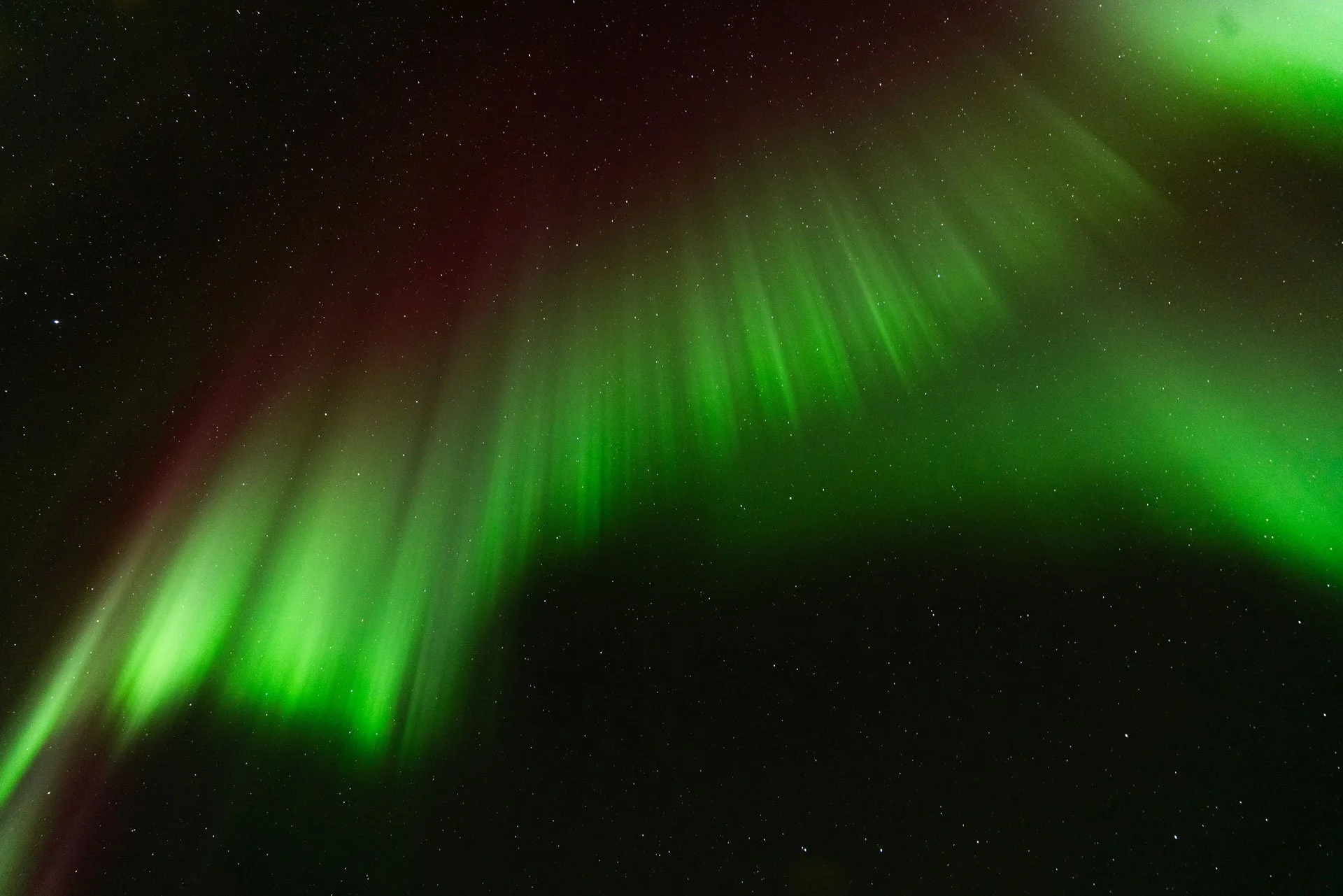From sun to sky: The science behind the northern lights
The aurora borealis might feel like pure magic, but there’s real science behind those dancing colours in the Arctic sky.
Red and green northern light show during October 2024 from Skårungen
What Exactly Are the Northern Lights?
The northern lights, or aurora borealis, are glowing waves of colour in the night sky, most often green but sometimes pink, purple, or even red. They’re created when tiny charged particles from the Sun meet Earth’s atmosphere high above our heads.
-
The Sun is constantly releasing a stream of particles called the solar wind. Sometimes, the Sun has bursts of activity — like solar flares or coronal mass ejections — that send even more particles into space.
-
These particles travel about 150 million kilometres from the Sun to Earth. The journey takes around 2–3 days, depending on the speed of the solar wind.
-
When the particles reach Earth, they’re guided by our magnetic field toward the polar regions. This is why auroras are seen near the North Pole (aurora borealis) and South Pole (aurora australis).
-
High up in the atmosphere — between 80 and 500 kilometres above the surface — the solar particles collide with gas molecules.
Oxygen at high altitudes = red auroras
Oxygen at lower altitudes = green auroras (the most common)
Nitrogen = purple, pink, or blue auroras
These collisions release energy in the form of light, which we see as the shimmering curtains of the aurora.
Why Lofoten is perfect for aurora viewing
Here in Lofoten, we are directly under the auroral oval — the zone where auroras happen most frequently. That means even with moderate solar activity, we have a high chance of seeing them.
Simple recap
Sun → Solar Wind → Earth’s Magnetic Field → Collision in the Atmosphere → Light Show
In our next post in the Aurora Series, we’ll go deeper into the advanced science of auroras: solar cycles, geomagnetic storms, and how scientists predict the lights.

